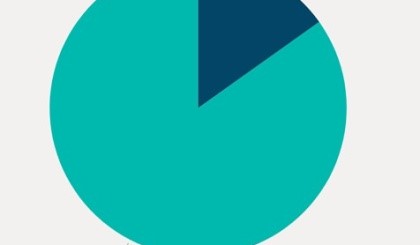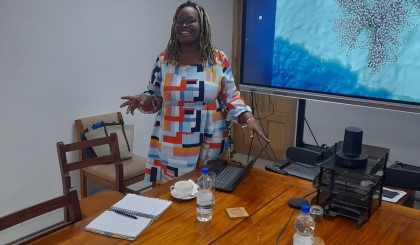Data visualisation of catch logs and tracking records |06 January 2024
Seychelles Nation
12-month observation under SeyCCAT project revealed
The final session of the project ‘Pilot and Integration of Tracking, Logbook, and Market Traceability Tools for Co-Management of the Small-Scale Fisheries Sector in Seychelles’, took place on Thursday, December 14, at the SFA conference room.
Present were representative of the Seychelles Fishing Boat Owners Association, individual fishers, and SFA involvement team, with whom the project coordinator has been in communication throughout.
The purpose of the last workshop was to share the data gathered in several visualisation formats, as well as how and for whom it may be useful. Following a presentation by Betty Mondon, the project coordinator, the participants shared their perspectives on the project’s progress and offered suggestions on how to effectively carry out an expanded version of it.
The Seychelles Lansiv Logbook was the digital tool used by 24 participated fishers to submit their catch logs. This platform was customised in previous workshops at the beginning of the project by groups of fishers from five different communities on Mahé and Praslin. The data presented during the last session was as a result of the 12 months of gathering through their catch reports and positions recorded by the NEMO VMS tracker.
During the session, the participants concurred that there might have been more obstacles than advantages. There was a lack of willingness and consistency of fishers to submit daily or weekly catch logs. Data loggers had to be employed to communicate with each fisher to record their daily catch or that of the week. The catch logs included the recording of species caught, their weight, quantity, the names and quantity of fishers who participated in the fishing expedition, and the specifics of the cost.
One can read this analysis of all submitted catch logs at the conclusion of each submission or even years later. The availability of NEMO technology for fishing vessels presented another obstacle. According to Mrs Mondon, she had fishers lined up who were prepared to receive a tracker on their vessels and who had even signed the fisher consent forms. However, SFA was unable to deliver because the company CLS’s first NEMO batch of 300 was largely defective, necessitating their replacement and making it impossible for new fishers to be registered for this project.
She did, however, assert that the project was significant in its entirety. “Yes, it was a pilot programme. Our goal was to get 30 fishers to record their catch and monitor their track routes in order to evaluate what the data revealed and what it could teach us.”
Imagine if we had such data for all artisanal fishers, records of every fish caught, kgs, time period when they were caught and in which season. Such information can tell us from when a particular species is being reduced in population to the environmental, social and financial impact of artisanal fishers on the sea, society and the economy.”
The accompanying photos show some highlights of the last session.
Contributed




Leave A Comment